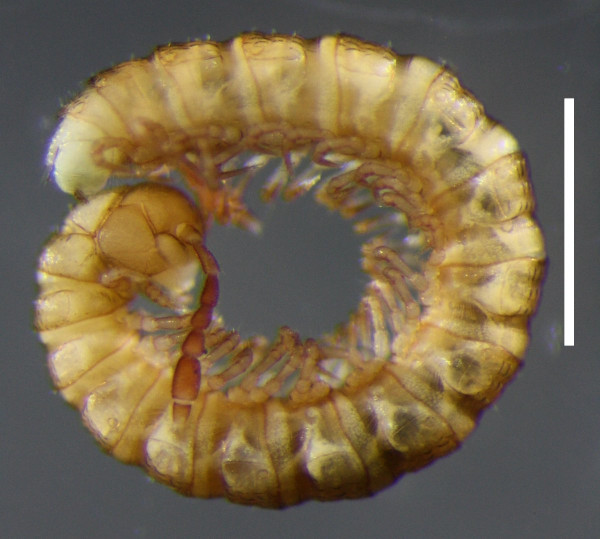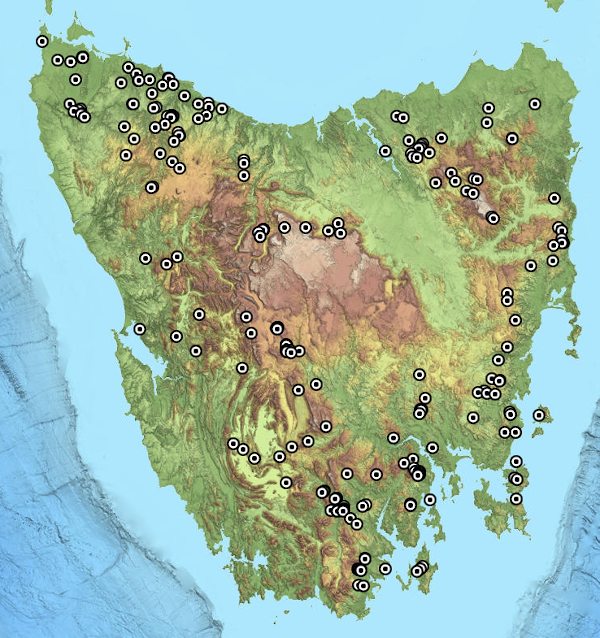Undescribed Polydesmida
For taxonomists studying Tasmanian Polydesmida in future, much of the work will be describing the tiny H+19 dalodesmids already in collections. More than 70 of these have been sorted out and given codenames, with most specimens held at the Queen Victoria Museum and Art Gallery in Launceston. All the new species are ca 6 mm long or less as adults, pale or light-coloured, and typically with three transverse rows of setae across each metatergite.

Unidentified female. Scale bar = 1 mm
These tiny millipedes are unlikely to be seen or collected by students and naturalists who use the Tasmanian Millipedes website. For this reason I haven't included codenames and gonopod images of undescribed Polydesmida in this guide.
One of the new species (from the Savage River Pipeline Road) is clearly a new Atrophotergum. Another 12 (all from the northwest) have long, basally fused gonopods like those of Dysmicodesmus jeekeli. For the remaining ca 60 new species, new genera will need to be established.
None of the new species can be recognised as females. Some species are well-represented by male specimens, such as codename "M17" from the northwest (32 males) and "M7" from the southeast (43 males). For most species there are only a few males, and 28 species are only known from a single specimen.
Much more collecting of these tiny millipedes is needed, but hand-sampling and pitfall trapping haven't proved profitable in the past. The best yields come from sieving and Tullgren funnel extraction of moist leaf and twig litter.
The map below shows the known localities for males of these undescribed Polydesmida. They occur mainly in forest and scrub in areas with annual rainfall greater than ca 700 mm. As an ecological grouping they might be called "tiny H+19 Polydesmida in soil and litter", roughly acronymed as "THPSL" and familiarly called "thipsels". There are almost certainly more undiscovered "thipsels".
Update. I collected 13 males and 14 females of a new "micro-polydesmidan" thipsel near Loyetea in NW Tasmania in late 2022. The known linear range is only 0.8 km and I haven't found any additional specimens, despite repeated searches in subsequent years at the 2022 sites and in neighbouring areas.

Topographic basemap from LISTmap
